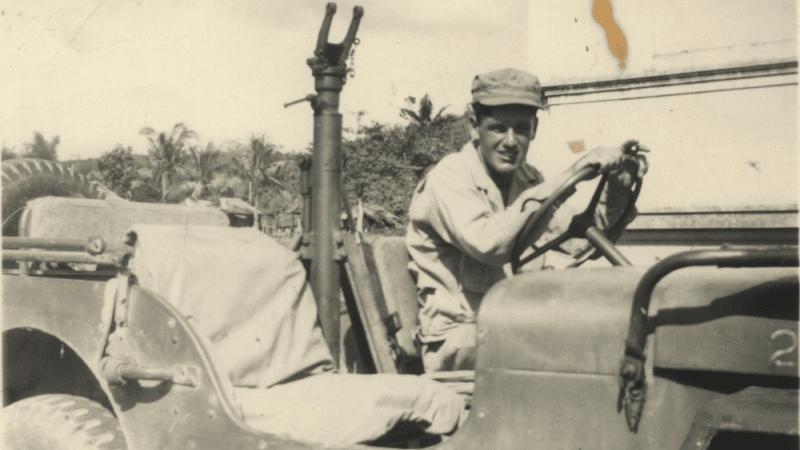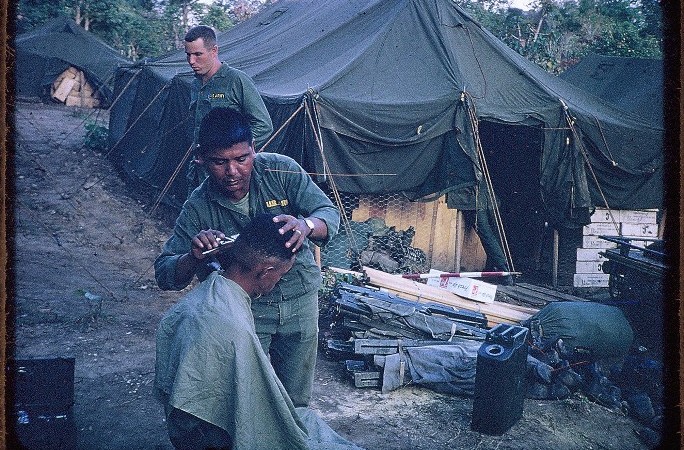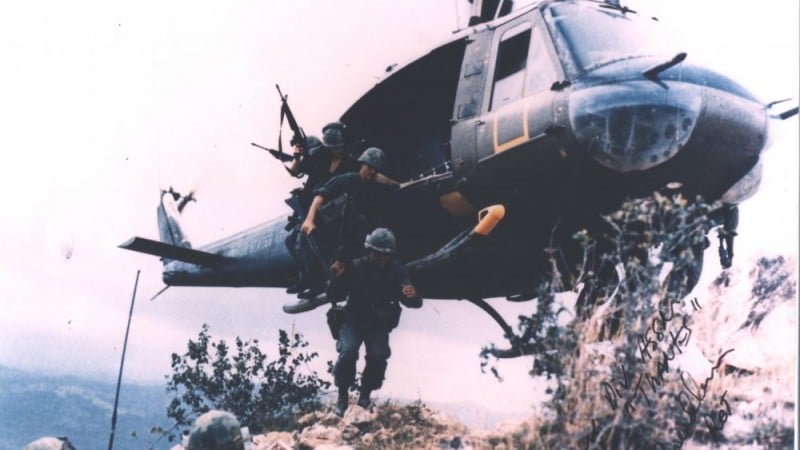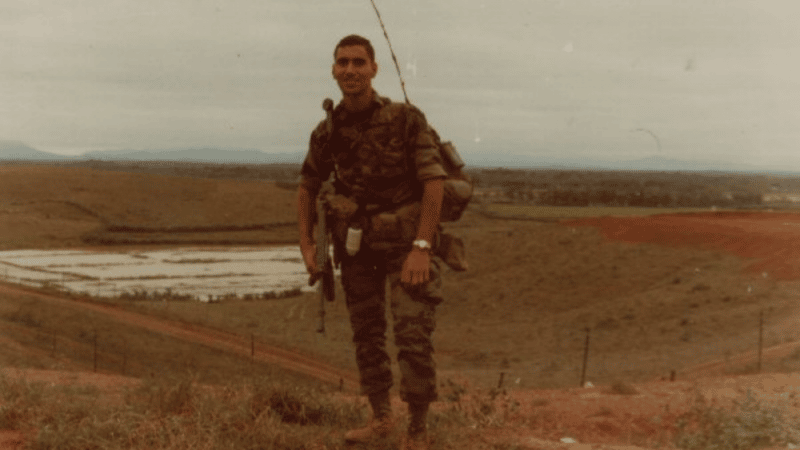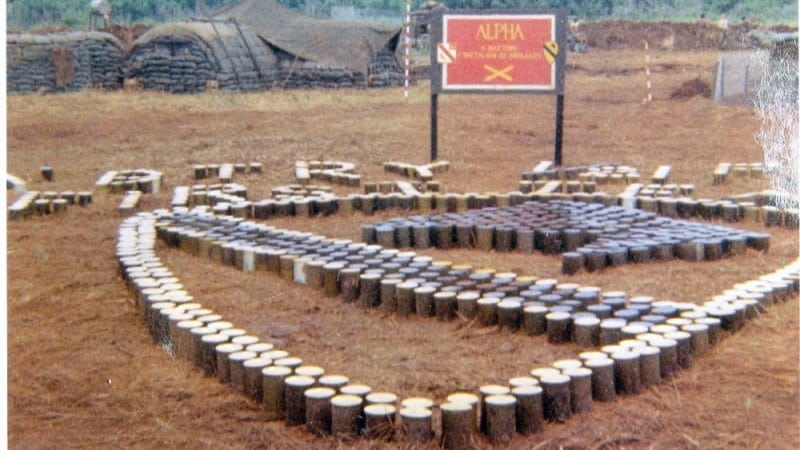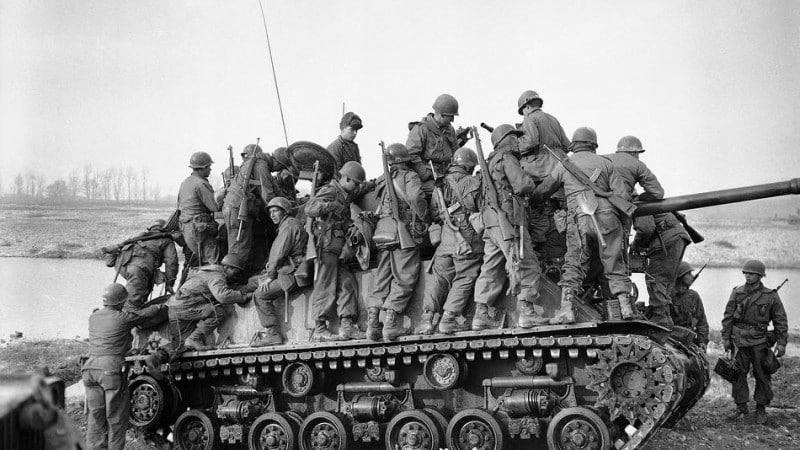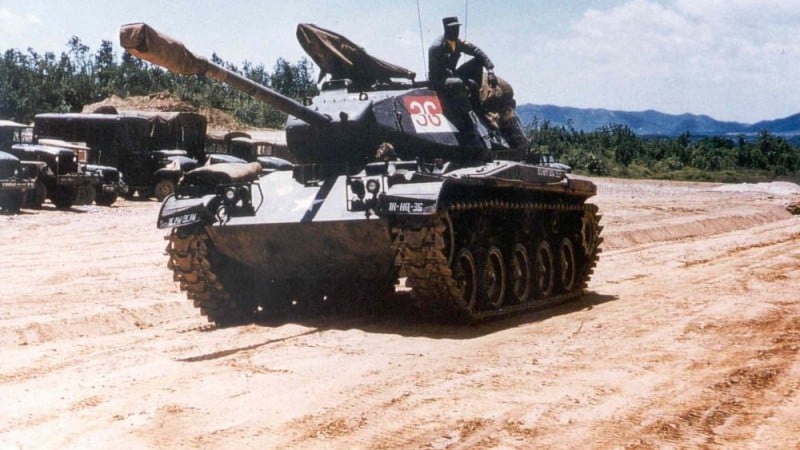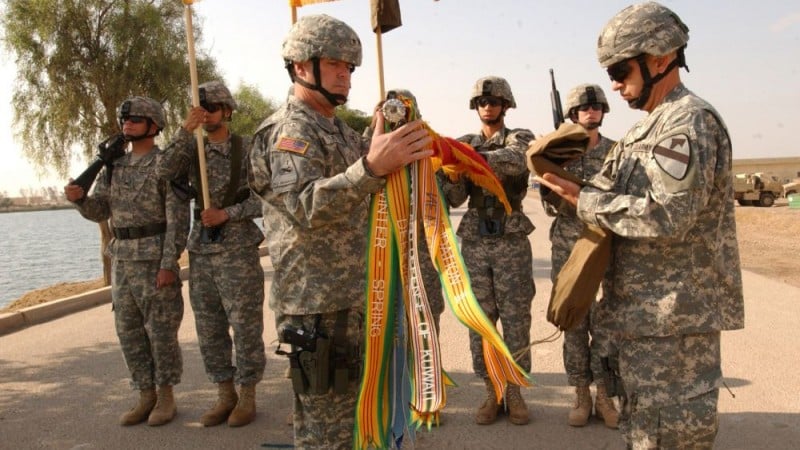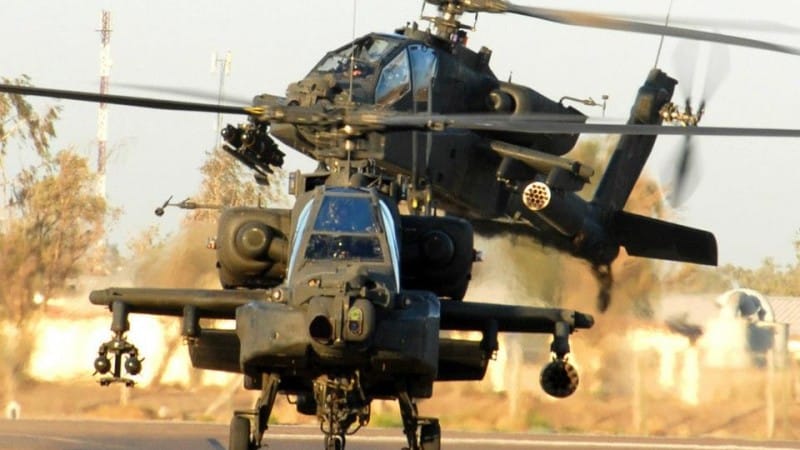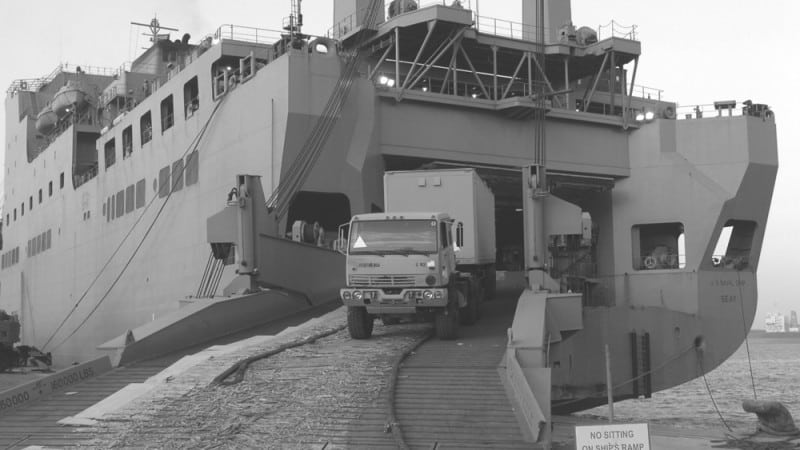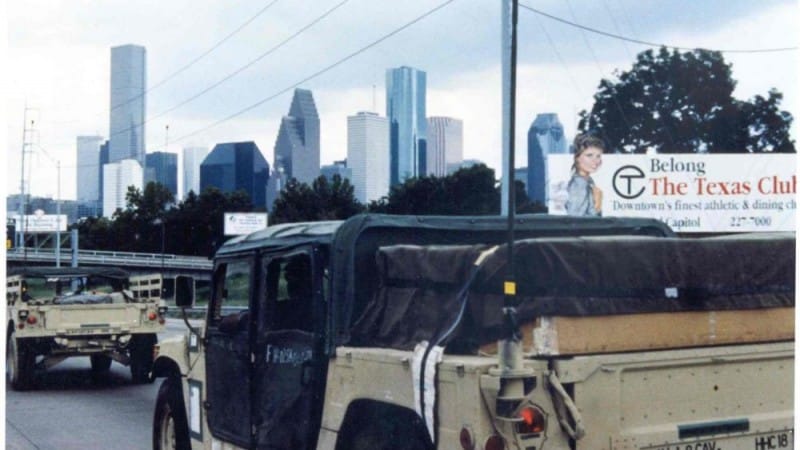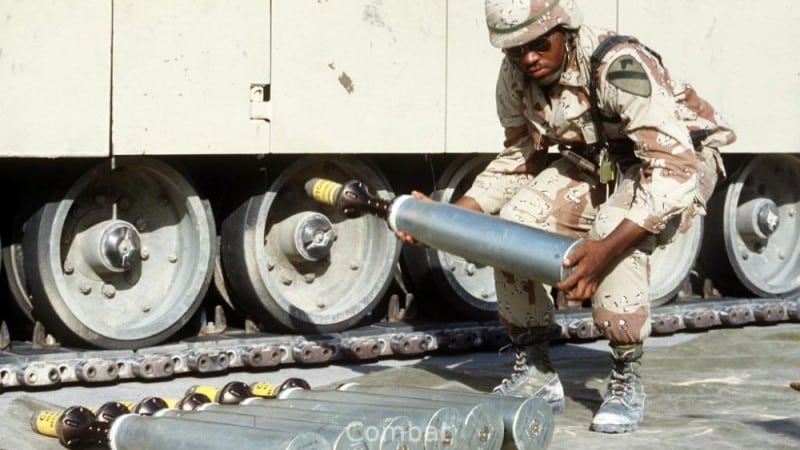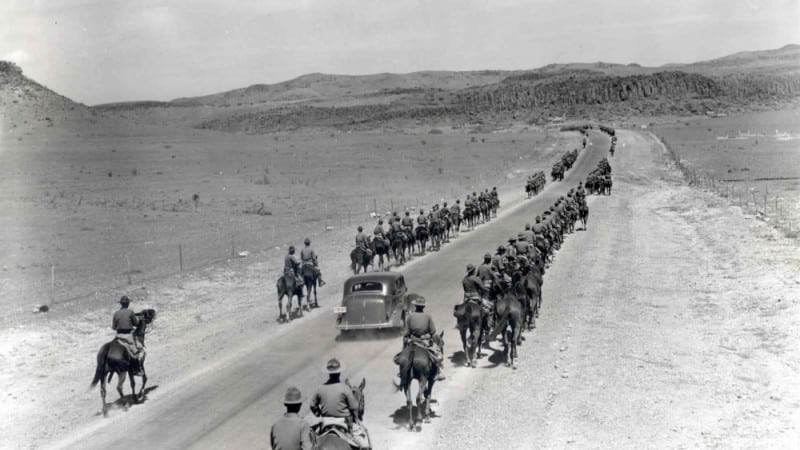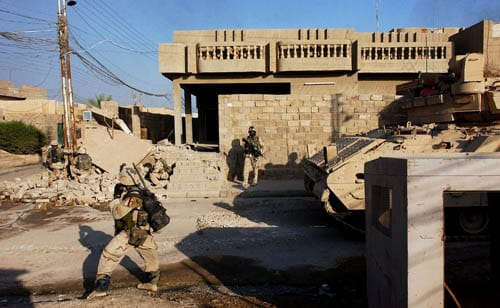13th Signal Battalion
The roots of the 13th Signal Battalion can be traced back to 1 July 1916
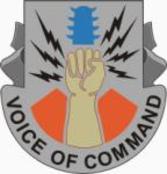
The roots of the 13th Signal Battalion can be traced back to 1 July 1916, when its predecessor, the 7th Field Battalion, Signal Corps was constituted in the Regular Army. On 14 July 1917, the 7th Battalion was organized at Fort Oglethorpe, Georgia and subsequently assigned to the 15th Cavalry in 1917. On 12 May 1918, the 7th Battalion was relieved from the 15th Cavalry Division and on 16 September 1921 was disbanded at Fort Bliss, Texas.
On 16 September 1921, The 13th Signal Troop was organized at Fort Bliss, Texas as and assigned to the 1st Cavalry Division. On 13 December 1923, the unit was redesignated as the 1st Signal Troop and remained assigned to the 1st Cavalry Division. On 19 September 1932, the 7th Field Battalion was reconstituted in the Regular Army and consolidated with the 1st Signal Troop, The consolidated unit was designated as 1st Signal Troop, an element of the 1st Cavalry Division.
Since its organization in 1921, signal equipment and procedures have changed drastically; the old pack radios and telegraph have fallen by the wayside. Modern equipment has evolved over the years, incorporation technology gains, to meet new mission requirements. The flags and torch were relegated to nothing more than collar insignia.
In 1936, the 1st Signal Troop participated in the maneuvers of the 1st Cavalry Division which was held at Marfa, Texas. It also took part in the Proposed Infantry Division Tests at Camp Bullis, Texas and in 1938, participated again in the 1st Cavalry Division Maneuvers at Balmorhea, Texas. With the European war on the horizon, maneuvers accelerated. In 1939 the Troop maneuvered at Camp Bullis, Texas and with the 1st Cavalry Division at Balmorhea, Texas. In 1940 the Troop took part in the Louisiana maneuvers in May and August.
World War II, Pacific Theater
Although the 1st Cavalry Division was created as a result of a proven need for large horse-mounted formations, by 1940 many thought that the march of warfare technology progress had left the horse far behind. The era of the tank, automobile, aircraft, and parachute had dawned and eclipsed the age of the armored horseman. On 7 December 1941, without warning, the Japanese destroyed the American fleet at Pearl Harbor. Immediately Troopers returned to the 1st Cavalry Division from all over the United States. They outfitted their horses and readied their weapons and vehicles in anticipation of the fight against the Axis.
In February 1943, the entire 1st Cavalry Division was alerted for an overseas assignment as a dismounted unit. An impatient 1st Cavalry Division was dismounted and they were processed for movement to the Southwest Pacific theater as foot Soldiers. In mid June 1943, the last troops of the division departed Fort Bliss, Texas for Camp Stoneman, California and later on 3 July, boarded the “S.S. Monterey and the S.S. George Washington” for Australia and the Southwest Pacific.
On 26 July, three weeks later, the division arrived at Brisbane and began a fifteen mile trip to their new temporary home, Camp Strathpine, Queensland, Australia. The division received six months of intense combat jungle warfare training at Camp Strathpine in the wilds of scenic Queensland and amphibious training at nearby Moreton Bay. In January 1944 the division was ordered to leave Australia and sail to Oro Bay, New Guinea. After a period of staging in New Guinea, it was time for the 1st Cavalry Division to receive their first baptism of fire.
On 27 February, Task Force “Brewer”, consisting of 1,026 Troopers, embarked from Cape Sudest, Oro Bay, New Guinea under the command of Brigadier General William C. Chase. Their destination was a remote, Japanese occupied island of the Admiralties, Los Negros, where they were to make a reconnaissance of force and if feasible, capture Momote Airdrome and secure a beachhead for the reinforcements that would follow.
Just after 8:00 on 29 February, the 1st Cavalry Troopers climbed down the nets of the APD’s and into the LCM’s and LCPR’s, the flat bottomed landing craft of the Navy. The task force, which included the 1st Signal Troop, landed at Hayane Harbor and took the Japanese by surprise.
On 18 May 1944, the Admiralty Islands campaign officially ended. Japanese casualties stood at 3,317 killed. The losses of the 1st Cavalry Division included 290 dead, 977 wounded and 4 missing in action. Training, discipline, determination and ingenuity had won over suicidal attacks. The First Cavalry Troopers were now seasoned Veterans.
The next action for the 1st Cavalry Division was on the Philippines Island of Leyte. On Columbus Day, 12 October 1944, the 1st Cavalry Division sailed away from its hard earned base in the Admiralties for the Leyte invasion, Operation King II. On 20 October, the invasion force must have appeared awesome to the waiting Japanese as it swept toward the eastern shores of Leyte. The Division fought tirelessly against Japanese fortifications. With the last of the strongholds of Leyte eliminated, the division moved on to Luzon, the main island of the Philippines. Leyte had been the biggest campaign of the Pacific war, but the record was about to be shattered by the invasion of Luzon.
On 26 January, conveys were formed and departed for the Lingayan Gulf, Luzon Island, the Philippines. Landing without incident on 27 January, the division assembled in an area near Guimba and prepared for operations in the south and southwest areas. One of the First Team’s most noted feats was accomplished during the fighting for Luzon. General MacArthur issued an order “Get to Manila!”. The resulting mission, and the participating units, was dubbed a “flying column” by General Mudge. The rescue mission, lead by Brig. General William C. Chase, was divided into three “serials”. On 3 February 1945, lead elements of the rescue column crossed the city limits of Manila at 6:35 PM, covering the 100 miles of rough terrain in approximately 66 hours. The first of many “Firsts” was recorded in history;
“First in Manila”
On 13 August 1945, the 1st Cavalry Division was alerted that they were selected to accompany General Douglas MacArthur to Tokyo and would be part of the 8th Army in the occupation of Japan. On 02 September the long convey of ships steered into Yokohama Harbor and past the battleship Missouri where General MacArthur would later receive the Japanese surrender party. The First Team was given the honor of leading the Allied Occupational Army into Tokyo. At noon on 5 September 1945, a reconnaissance team headed by Colonel Charles A. Sheldon, the Chief of Staff of the 1st Cavalry Division, entered Tokyo. This embarkment was the first official movement of American personnel into the capital of the mighty Japanese Empire.
At 8:00 on 8 September, a history making convey left Hara-Machida with Tokyo as their destination. Headed by Major General William C. Chase, commanding general of the 1st Cavalry Division, the party included a Veteran from each troop of the division. Passing through Hachioji, Fuchu and Chofu, the Cavalry halted briefly at the Tokyo City Limits. General Chase stepped across the line thereby putting the American Occupational Army officially in Tokyo and adding another “First” to its name;
“First in Tokyo”
The first mission of the Division was to assume control of the city. On 16 September, the 1st Cavalry Division was given responsibility for occupying the entire city of Tokyo and the adjacent parts of Tokyo and Saitama Prefectures. On 25 February, the 1st Signal Troop was assigned a permanent station at Camp Drake near Tokyo.
1946 was welcomed as a new dawning of peace for the 1st Cavalry Division. The days of privation, hardship, suffering and death were over for the first time since 7 December 1941. On 25 March 1949, the 1st Signal Troop was redesignated as the 13th Signal Company and remained assigned to the 1st Cavalry Division. The following years of the occupation found the 1st Cavalry Division in control of Tokyo and vicinity, the capital of the war-built Japanese Empire. 1950 called for an increased training to improve the ever increasing combat effectiveness of the division, which was soon to be tested.
Korean War
It happened before dawn on 25 June 1950. Less than 5 years after the terrible devastations of World War II, a new war broke out from a distant land whose name means “Morning Calm”. On 18 July the 1st Cavalry Division was ordered to Korea. Initially scheduled to make an amphibious landing atInchon, it was redirected to the southeastern coast of Korea at Pohang-dong a port 80 miles north of Pusan. The North Koreans were 25 miles away when elements of the 1st Cavalry Division swept ashore to successfully carry out the first amphibious landing of the Korean War. Its initial mission was to establish the Pusan Perimeter. By 22 July, all regiments were deployed in battle positions; in itself a remarkable logistical achievement in the face of Typhoon Helene that pounded the Korean coastline.
The landing at Pohang-dong helped halt the North Korean war machine at the Pusan perimeter. The division broke out of the perimeter in mid-September and started north. Crossing the 38th Parallel on 9 October 1950, the Troopers of the 1st Cavalry Division crashed into Pyongyang, capturing the capital city of North Korea on 19 October. The sudden intervention of Communist Chinese forces dashed hopes of a quick end to the war. First Team Troopers fought courageously in the see-saw campaigns that followed, and successfully defended the city of Seoul. By January 1952, the division, after 18 months of continuous fighting, rotated back to Hokkaido, Japan.
On 20 August 1957, the First Cavalry Division, guarding the northern sections of Honshu, Japan was reduced to zero strength and transferred to Korea (minus equipment). With the advent of the Pentomic Organizational Structure, on 15 October 1957, the 13th Signal Company was reorganized and redesignated as Headquarters and Headquarters Company, 13th Signal Battalion, an element of the 1st Cavalry Division.
In ceremonies held on 15 October, the colors of the 24th Division were retired and the colors of the 1st Cavalry Division were passed to the Commanding General of the old 24th Division, Major General Ralph W. Zwicker. “The First Team” had returned to Korea, standing ready to defend the country against Communist aggression.
On 1 November 1957, the organic elements of the 13th Signal Battalion were activated in Korea. The redesignated and reorganized First Cavalry was assigned the mission of patrolling “Freedom’s Frontier” (DMZ). In addition to their assigned duties of patrol along the southern border of the DMZ, training remained a number one priority for the Troopers and unit commanders. In January 1958, the largest training exercise in Korea since the end of hostilities, Operation Snowflake, was conducted. This exercise was followed by Operation Saber in May and Operation Horsefly in August. In June 1965 the 13th Signal Battalion began rotation back to the United States along with other units of the 1st Cavalry Division.
Vietnam War
The 1st Cavalry Division went home, but only long enough to be reorganized and be prepared for a new mission. On 3 July 1965, in Doughboy Stadium at Fort Benning, Georgia the colors of the 11th Air Assault Division (Test) were cased and retired. As the band played the rousing strains of Garryowen, the colors of the 1st Cavalry Division were moved onto the field. As part of the reorganization, the 511th Signal Battalion, Support Command, 11th Air Assault Division (Test) was redesignated as the 13th Signal Battalion, Support Command, 1st Cavalry Division (Airmobile).
Within 90 days of becoming the Army’s first airmobile division, the First Team was back in combat as the first fully committed division of the Vietnam War. The 13th Signal Battalion arrived in Qui Nhon, Republic of Vietnam, in Mid September 1965 and moved its personnel and equipment overland on Route 19 west to the division base camp at An Khe. They spent the remainder of the year outfitting the base camp with equipment to meet the tactical communications of the division.
The 13th Signal Battalion, working with the 8th Engineer Battalion, designed, constructed and equipped a signal complex on the top of nearby Hon Cong mountain which became the communications hub of the northern half of the Vietnam Republic. Access to the construction site was made possible by the use of CH-54 Flying Cranes to move the heavy earth moving equipment. All this was done while construction and upgrading of Camp Radcliff continued.
The 13th Signal Battalion teamed up with the information office to provide American Foeces Radio Saigon (AFRS) radio programming to the Skytroopers at Camp Radcliff. Since the AM signal from the Qui Nhon booster station could not be heard by the An Khe Valley, a transmitter and tower were obtained from the AFRS in Saigon. Early in December, AFRS – An Khe, broadcasting at 1,300 kilocycles signed on the air.
The battalion’s basic signal systems were given their first full scale combat test in the Plei Me Campaign that took place in Ia Drang Valley in October and November of 1965. The advance communications was located at the division forward command post at Pleiku, which in turn, was in a personnel pod carried by a CH-54 “Flying Crane”. All communications equipment and personnel at the forward communications pod were provided by the battalion. This center was operational 24 hours a day for the duration of the entire operation.
The airborne relay was particularly outstanding and very effective. This flying communications van was credited of saving the lives of many who otherwise would have been unable to communicate their needs or calls of distress. The unit consisted of a fixed wing aircraft equipped with two powerful FM radios. The craft would fly an orbit 10,000 feet above the widely dispersed combat units, to pick up and retransmit messages among units which would not otherwise be able to communicate.
The communication demands of Operation Paul Revere II precipitated the creation of a rear operation support system. The element was formed from all parts of the signal battalion in order to support the division forward command post. Another system innovation was instituted in the summer of 1966. The plan was to standardize the prewiring of the forward switchboard and produce a telephone directory prior to an operation, thus eliminating much of the confusion previously associated with a move of the division forward command post.
An air courier was required to meet and maintain the needs of Operation Thayer. A UH-1 helicopter was placed in a standby mode, with a dependable schedule throughout the campaign. Operation Paul Revere IV ran concurrently with Thayer II. In order to meets the needs of the dual operation, several distinct duplicate nets had to be created.
A major project for 1968 was the physical improvement of the Hon Cong Mountain facility. The needs for a stable power system was met with two 100 kilowatt generators installed with the aid of a CH-54 “Flying Crane”. During the year the residents of the hill remodeled and reconstructed the entire site. Conex containers, crude bunkers and makeshift shelters were removed and replaced with quonset buildings on concrete pads.
At the end of 1969, the nerve center of the divisional signal operation was located at Phuoc Vinh. The rear operations platoon had charge of all signal facilities at rear locations. That included the communications center telephone switchboard and radio network. The hub of the telephone system of the division was set up in a small sandbagged bunker. Four telephone operators presided over the two switchboards of the “Skyking” and “Phuoc Vinh” systems. The “Skyking” telephone was set aside as strictly divisional level command and staff network, while the “Phuoc Vinh” system was integral with the Corps Area Communication System.
In addition to the realm of command and control, the battalion also maintained a personal service to every Trooper of the division, known as Military Affiliated Radio Station (MARS). The signalmen dedicated to helping their fellow Soldiers talk to their Families at home. While the anxious solder waited, the Mars station made contact with one of the thousands of private “ham” radio stations in the states. Upon receiving a call, the “ham” would then connect to the local telephone system, completing the telephone call to the Soldiers home.
Although 26 March 1971 officially marked the end of duties in Vietnam for the 1st Cavalry Division, President Nixon’s program of “Vietnamization” required the continued presence of a strong U.S. fighting force. The 2nd Battalion of the 5th Regiment, 1st Battalion of the 7th Regiment, 2nd Battalion of the 8th Regiment and 1st Battalion of the 12th Regiment along with specialized support units as “F” Troop, 9th Cavalry and Delta Company, 229th Assault Helicopter Battalion and 525th Signal Company helped establish the 3rd Brigade headquarters at Bien Hoa. Its primary mission was to interdict enemy infiltration and supply routes in War Zone D.
By 31 March 1972, only 96,000 U.S. troops were involved in the Vietnam combat operations. In mid June 1972, the standdown ceremony for the 3rd Brigade was held in Bein Hoa and the colors were returned to the United States. The last Trooper left from Tan Son Nhut on 21 June, completing the division recall which had started on 05 May 1971. With the 3rd Brigade completing their withdrawal, the 1st Cavalry had been the first army division to go to Vietnam and the last to leave.
The Modern Cavalry
On 5 May 1971, the colors of the 1st Cavalry Division, minus those of the 3rd Brigade, were moved from Vietnam to Fort Hood, Texas. Using the assets of the 1st Armored Division, the 1st Cavalry Division was reorganized, reassigned to III Corps and received an experimental designation of the Triple-Capability (TRICAP) Division. Its mission, under the direction of Modern Army Selected Systems Test, Evaluation and Review (MASSTER) was to carry on a close identification with and test forward looking combined armor, air cavalry and airmobile concepts. The Division consisted of the 1st Armored Brigade, the 2nd Air Cavalry Combat Brigade (ACCB) the 4th Airmobile Infantry Brigade. Division Artillery provided the fire support and Support Command provided normal troop support and service elements. The 13th Signal Battalion continued to provide its air mobile support capability as a part of the “Division Troops”.
The main body of the 1st Cavalry Division, at Fort Hood, under the direction of MASSTER, a testing agency created in 1969 to oversee the development of surveillance, target acquisition an night observation equipment, continued to test future concepts of mobility and flexibility on the battlefield. The tests continued for three and a half years were very demanding. When all TRICAP testing was completed, the mission of airmobile anti-armor warfare was transferred to the 6th Cavalry Brigade (Air Combat) collocated at Fort Hood, Texas and on 21 February 1975, the 1st Cavalry Division was reorganized and redesignated to become the newest Armored Division in the Army. In this new designation, the 13th Signal Battalion had to give up its airmobile capability and assume a new role as Signal Battalion in an Armored Division.
In 1979 the 13th Signal Battalion exercised its Armored Cavalry capability on maneuvers in West Germany during Return of Forces to Germany (REFORGER). On REFORGER 1983, the 13th Signal Battalion reinforced its mission of providing fast and reliable communications for the 1st Cavalry Heavy Armor Division. Again in 1987, the 13th Signal Battalion deployed to West Germany to provide communications. In October 1987, the 13th Signal Battalion was chosen to test a new nondevelopmental procurement concept in tactical communications by field testing (normally accomplished by the contractor) the new Army Communications System, Mobile Subscriber Equipment (MSE).
Persian Gulf War, Southwest Asia
In August 1990, the 1st Cavalry Division was alerted for deployment to Southwest Asia as part of the joint forces participating in Operation Desert Shield. The focus at that time was the defense of Saudi Arabia against potential Iraqi attack. A factor in the successful execution of the air and ground attacks of the First Team was the timely and reliable distribution of coordinated battlefield command and control information. The mission of the 13th Signal Battalion was to setup, operate and maintain a reliable tactical communications network in the theater of operations of the 1st Cavalry Division. The centerpiece of this activity was an “antenna farm”, erected deep in the Ruqi pocket near the Kuwait border supported by Mobile Subscriber Equipment (MSE), a Corps area communication system that provides secure mobile voice/data/facsimile service.
Operation Enduring Freedom – 2001
After the attacks of 11 September 2001, the military accelerated plans for the use of joint forces to protect key national assets from terrorist attack. After extensive planning and coordination, elements of 4-5th Air Defense Artillery and 13th Signal Battalion were deployed as a task force to Washington, DC. Over 150 Soldiers arrived to man Sentinel radars, Avengers, and Stinger missiles under the command of First Air Force. The Troopers quickly prepared to engage and destroy any airborne threat declared hostile to the National Capital Region. The Task Force’s operation was the first military defense of Washington since the Anti-Ballistic Missile systems of the 1970s. They remained vigilant and ready to destroy any hostile threat 24 hours a day, 7 days a week.
Today’s Cavalry
In June 1992, the 13th Signal Battalion continued to extend the technical use of MSE through the incorporation of an OY 4 Retrofit, which gave the division Packet Switching capability for the first time. Subsequently in MEFEX Joint Exercise the battalion established a packet switch network which interfaced with the Air Force, Navy and Marine packet switching networks.
In July 1993, the battalion fielded a long haul satellite platoon, providing the division with worldwide communication capability. The “Voice of Command” continues to ride on the wave of the future, focusing on maintaining its standards of training excellence and strides in automation enhancements. The battalion stood ready to fight, while at the same time providing the vital and necessary information networks to the “First Team” anyplace and any time.
Operation Iraqi Freedom II, 2003 – 2005
In January, 2004, the 13th Signal Battalion, as part of the 2nd Brigade Combat team, consisting of over 3,000 troops departed for Iraq. On 31 January the first elements of the 2nd Brigade Combat Team arrived safely in Baghdad after moving overland in a two day journey of 250 miles from Camp Udairi, Kuwait. There was minimal contact with any insurgents and all vehicles made it to Baghdad under their own power.
The first echelon of units, comprising of nearly 3,000 Soldiers, are being billeted at the first of eight bases on the city’s outskirts, Camp Victory North, near the Baghdad International Airport which covers over 1,000 acres and is capable of housing between 25,000 and 30,000 troops. This camp was the homebase for the 2nd Brigade Combat Team, some divisional units, and most of the supporting FORSCOM units.
Task Force 1-5, consisting of “A” Company, 2nd Battalion, 12th Cavalry, “HHC”. “B” and “C” Company, 1st Battalion, 5th Cavalry, “A” Company, 15th FSC plus 13th Signal Battalion and 312nd MI detachments, soon relocated their operation base about 12 kilometers to Banzai Patrol Base in order to provide a more strategic coverage to several critical structures and organizations such as the Kadhum Shrine which is the third holiest shrine in Iraq.
On 23 March, 2005, completing their tour of duty, additional units of the 13th Signal Battalion, 2nd Battalions, 7th Cavalry and 5th Cavalry Regiments arrived home to Ft. Hood were well received at Cooper Field by a screaming crowd of Family and friends.
Army Modular Forces – 2005
Following the long series of assignment for the 1st Cavalry Division – the 13th Signal Battalion was inactivated at Fort Hood, Texas on 15 July 2005 as part of task of reorganizing and realigning the manpower and equipment resources of the 1st Cavalry Division into the Army Matrix of Modular Forces.
Information compiled and composed by William H. Boudreau
Lineage and Honors of the 2nd Battalion, 19th Field Artillery
Lineage of the 2nd Battalion, 19th Field Artillery
Constituted 1 July 1916 in the Regular Army as Battery B, 19th Field Artillery. Organized 1 June 1917 at Camp Wilson, Texas (19th Field) Artillery assigned 12 December 1917 to the 5th Division (latter redesignated as the 5th Infantry Division). Inactivated 6 September 1921 at Camp Bragg, North Carolina. Activated 3 December 1934 at Fort Benjamin Harrison, Indiana.
Reorganized and redesignated 1 October 1940 as Battery B, 19th Field Artillery Battalion. Inactivated 20 September 1946 at Camp Campbell, Kentucky. Activated 15 July 1947 at Fort Jackson, South Carolina. Activated 1 March 1951 at Indiantown Gap Military Reservation, Pennsylvania. Inactivated 1 September at Indiantown Gap Military Reservation, Pennsylvania. Activated 25 May 1954 at Augsburg, Germany. Inactivated 1 June 1957 at Fort Ord, California and relieved from assignment to the 5th Infantry Division.
Redesignated 15 October 1957 as Headquarters and Headquarters Battery, 2nd Howitzer Battalion, 19th Artillery, assigned to the 1st Cavalry Division, and activated in Korea (organic elements concurrently constituted and activated). Redesignated 1 September 1963 as the 2nd Battalion, 19th Artillery. Inactivated 2 April 1971 at Fort Lewis, Washington. Redesignated 1 September 1971 as the 2nd Battalion, 19th Field Artillery. Activated 20 April 1974 at Fort Hood, Texas. Inactivated 30 March 1979 at Fort Hood, Texas.
Honors of the 2nd Battalion, 19th Field Artillery
Campaign Participation Credit |
| World War I St. Mihiel Lorraine 1918World War II Normandy Northern France Rhineland Ardennes-Alsace Central EuropeVietnam War Defense Counteroffensive Counteroffensive, Phase II Counteroffensive, Phase III Tet Counteroffensive Counteroffensive, Phase IV Counteroffensive, Phase V Counteroffensive, Phase VI Tet 69/Counteroffensive Summer-Fall 1969 Winter-Spring 1970 Sanctuary Counteroffensive Counteroffensive, Phase VII |
Decorations |
| Presidential Unit Citation — 23 Oct – 26 Nov 65, DAGO 40, 67
Valorous Unit Award — 1 May – 29 Jun 70, DAGO 43, 72 Republic of Vietnam Gallantry Cross w/Palm — 9 Aug 65 – 19 May 69, DAGO 59, 69; May 69 – Feb 70, DAGO 11,73, amended DAGO 42, 72; 21 Feb 70 – 28 Feb 71, DAGO 42, 72 Republic of Vietnam Civil Actions Honor Medal, FC — 1 Jan 69 – 1 Feb 70, DAGO 42, 72 Valorous Unit Award — 6 May 69, DAGO 39, 70 Artillery Liaison Section Battery A Battery B Detachment of thirteen (13) personnel of the 2d Battalion |
